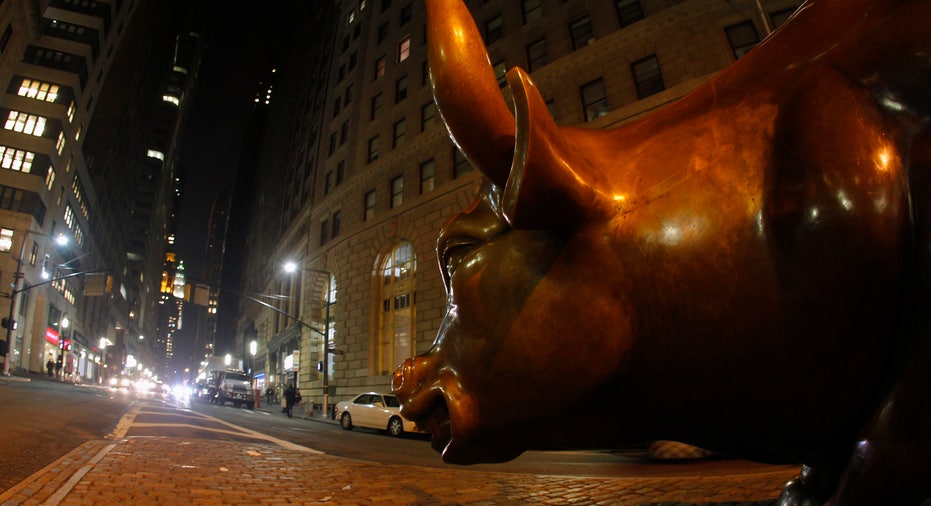Wall Street's Biggest Banks Not Among Fed Borrowers

The U.S. Federal Reserve on Friday named the banks that borrowed at its discount window during the third quarter of 2010 but the period showed limited activity and none of the biggest Wall Street firms had turned to the emergency facility for help.
The disclosure of the once closely guarded information was forced on the Fed by the Dodd-Frank financial reform law. Some of the decline in borrowing may have reflected banks steering clear of the discount window because they knew their visit would be published, albeit with a two-year lag.
Lending activity was very modest compared to the peaks reached during the 2007-09 financial crisis, when banks borrowed billions of dollars to stay afloat.
The 360 borrowers were mostly small institutions and were widely spread across the country from Anchorage in Alaska down to Winter Park in Florida.
The central bank had strenuously opposed naming banks which accessed the window, arguing it could put them off using it in times of future stress out of fear it might make them look weak, which in turn could weaken the financial system.
The Fed last year had to disclose details on discount window lending during the financial crisis after media organizations sued for access, but Friday's release was the first quarterly batch of data mandated by Dodd-Frank.
When the law was enacted in July 2010, the Fed began informing borrowers that the loans would eventually become public. Fed officials, who spoke on a conference call with reporters on condition they not be identified, said it was impossible to know how much this may have reduced loan demand.
The officials noted that market conditions were relatively calm and said some of the borrowers were simply testing their ability to access the discount window, as evidenced by the relatively high number of small loans. More than 100 of the 732 loans taken out during the period were for just $1,000.
Stocks were generally higher during the quarter, although the KBW Bank index edged down slightly. While the economy had been recovering for a year, the pace of growth was moderate and in November the Fed launched a second round of bond purchases to spur a stronger recovery.
The data released on Friday covers a wide range of the Fed's activities, including discount window borrowing and foreign exchange transactions, from July 22, 2010, which was the day after the passage of Dodd-Frank, until Sept. 30, 2010.
MODEST ACTION
Gorham Savings Bank of Gorham, Maine, and Commerce Bank of Kansas City, Missouri took out the largest loans. Gorham borrowed $70 million and Commerce borrowed $60 million. Both loans were overnight credits, like most Fed discount window loans, although Gorham's loan was the third it had taken out in as many days.
The discount window is a Fed lending facility that banks can access in times of stress and it became essential to maintain functioning markets during the financial crisis.
Officials were not immediately available for comment at Gorham Savings Bank, which reported total assets of about $900 million in fiscal 2011 and a profit of just under $5 million.
Commerce Bank Controller Jeffery Aberdeen could not immediately recall why it had accessed the discount window in September 2010, but noted the bank had more than $20 billion in assets and some of the strongest capital ratios in the industry.
Commerce Bank's latest quarterly financial report showed it had $1.2 billion pledged as collateral for discount window borrowing as of June 30 of this year. A spokesperson for the bank did not respond to a request for comment on this more recent activity.
During the financial crisis, discount window lending peaked at $111 billion on Oct. 29, 2008, a month after the collapse of Lehman Brothers sent markets into free fall. In contrast, only $254.7 million was outstanding on the heaviest day of borrowing during the third quarter of 2010, which was Sept. 30, the final day of the quarter.
Regular weekly data from the Fed showed discount window activity stood at $219 million on Wednesday.
The release on Friday showed that of the 732 loans made in the quarter, some 450 were so-called primary credit and 30 were secondary credit. The rest were seasonal loans.
Primary credit is for banks deemed to be in good health, while secondary credit is for firms the Fed thinks are not as financially sound. Seasonal credit is aimed at smaller banks which suffer seasonal swings in loans and deposits, such as farm banks.



















